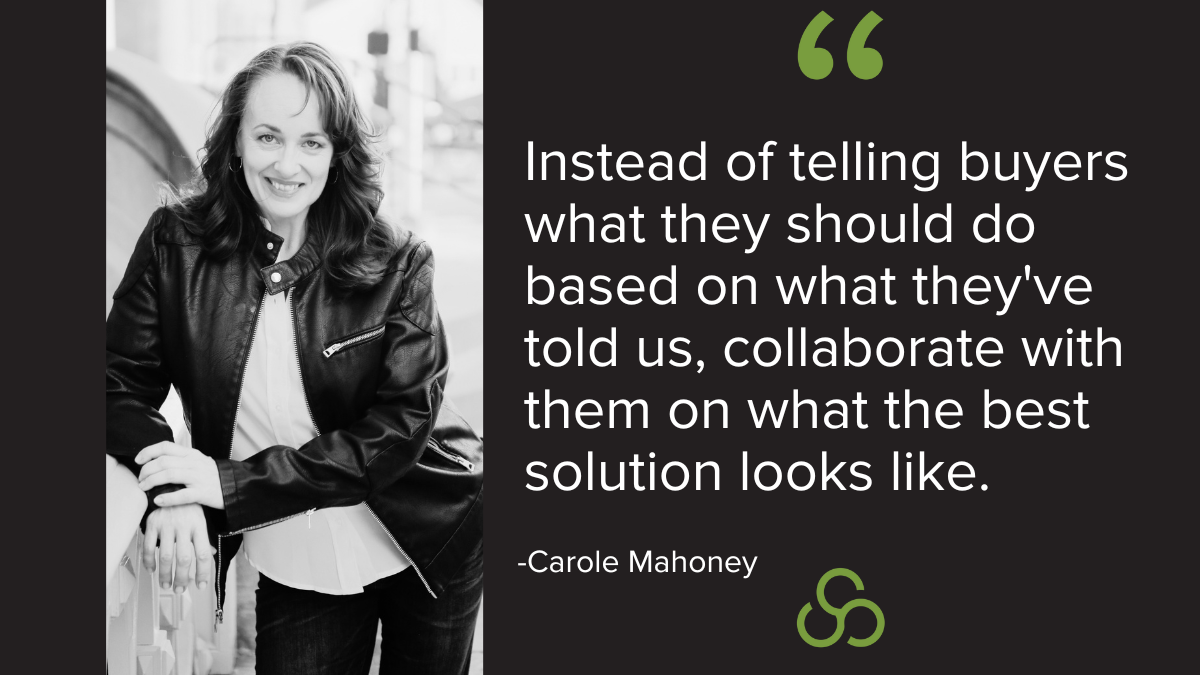How do we coach our sellers for success in a down and tough economy? Well, first, we need to address how buying behavior has changed. And what must we do to sell accordingly with that change?
In his book, The Science of Selling, David Hoffeld researched over four hundred studies to analyze how buying behavior has changed and how we need to adjust our selling strategies accordingly. Now, he identified six different whys he calls buyer behavior.
I didn't just take David's word for it, even though he researched four hundred studies. Still, there is also research in studies that have come out from other authors, researchers Gartner, Forrester, and Harvard, that supports buyers' needs to answer these six questions.
And the first one is, why do we even need to change it all? We need to overcome their preference stability for the status quo because change is risky, and It's much easier to stay with what we think is the right thing.
So we must be able to explain to our buyers or help them understand for themselves:
- Why should they make these particular changes?
- And then why now?
- Is this something that is a "nice to have"?
- Or is this something they must have to reach their own goals?
- What's the impact of that?
- What is the cost of consequences if they don't?
- And then why this industry solution?
- Why is this the way that they should go?
- And then why you? Why your particular solution?
- And why are you the one with whom I can build trust?
When we talk about "why your solution," how are we differentiating ourselves from everyone else?
And I'm going to give you a clue. It probably doesn't have much to do with your products and features or even your price, which brings us to the last question buyers need you to answer: Why should I even spend the money on this? --Going back to the "why do they need to do this now"?
In answering these particular questions, we also face some obstacles as salespeople when trying to sell to our buyers. And the first one is that buyers don't see our value.
I'm going to be honest here. A LinkedIn survey shows that forty-four percent of decision-makers who didn't make a decision said they didn't feel that the sellers understood their companies or their needs. This is a crisis in sales. And this is because one of their most important requirements is the seller's ability to understand what's going on with our buyers and customers.
How else can you differentiate or align your solutions to their problems and issues?
What are the selling behaviors that we need to change? We need to make sure that we're selling collaboratively with our buyers. This is a different version of consultative selling.
Because instead of telling buyers what we think they should do based on what they've told us, we're collaborating with them on what that best solution looks like. It's a back-and-forth conversation that goes deeper into how they feel a solution should be customized for them.
And another thing, we need to ensure that we're qualifying our buyers not just on their ability to make a change but their ability to make a decision. According to data from the Objective Management Group, fifty percent of sellers today are not good at qualifying opportunities.
So we must go beyond asking questions about their issues and challenges. Ask:
- How they make their decisions
- Why they make those decisions
- What they need to make those decisions
And finally, especially when we're talking about a tough economy, we need to help buyers to understand the value of either solving the problem or solving the problem with you. Unfortunately, forty-five percent of sellers today still sell on price. And that is going to be disastrous if we're going to make it through this tough economy.
Buying behavior has changed in a few ways.
One is if you listen to the Gartner studies and other studies showing that buyers prefer not to deal with sellers. They're only fifty to eighty percent of the way through their buying process before they want to talk to a salesperson.
And if you have been following the product-led growth movement --or what I call the "Amazon effect," What's happening is that buyers are not willing to sit through their twenty-question discoveries anymore. They're no longer willing to go through all of your sales process steps to get the answers and ideas of the solutions they need. And so we must ensure that, as sellers, we are meeting buyers where they're at.
We need to stop forcing them to go through our steps and, instead, align our steps to where they're at.
Does this mean you don't ask discovery questions? Of course, flipping not! Yes, of course, you're going to ask those questions. You might not get to ask them at the time and in the order you want. Instead, you may have to ask those questions during your demo as you're showing them that these are the possibilities or the options you have when dealing with this particular issue.
Another thing we need to do to sell how people buy.
I'm going to say this calmly:
Stop spamming buyers with cadences that are just scaling crap. Honestly, the time salespeople today have to spend on cadences that aren't working is a complete waste of time. And all it's doing is training buyers to ignore them.
A survey from LinkedIn found that ninety percent of executives ignore impersonal and automated sequences. I'm surprised it's only ninety percent. Because I'd like to meet the ten percent of executives that pay attention to spam. But I digress.
Instead, it would help if you looked at your cadences as something you can use to prompt attention or get a response, not necessarily the thing that books meetings or the opportunity for you. And to do a cadence that will be valuable to your buyers, you need to look at the content of those cadences.
- Are the cadences offering them status quo information?
- Or is it offering them information, data, and insights they didn't know about or hadn't considered before?
- Are those cadences something buyers share with other people, or are they just ignoring them?
So my advice is to:
- Personalized outreach
- Research
- Offer an insight or data point
Grab their attention and make them think differently about how they might approach a problem.
FIND OUT WHY OTHERS HAVE SAID THINGS LIKE:
💬"...written with bravery about topics that need to be discussed more often."
💬"...love this honest post - I have shared it with my whole team."
💬"...this is spot on and much needed!"







